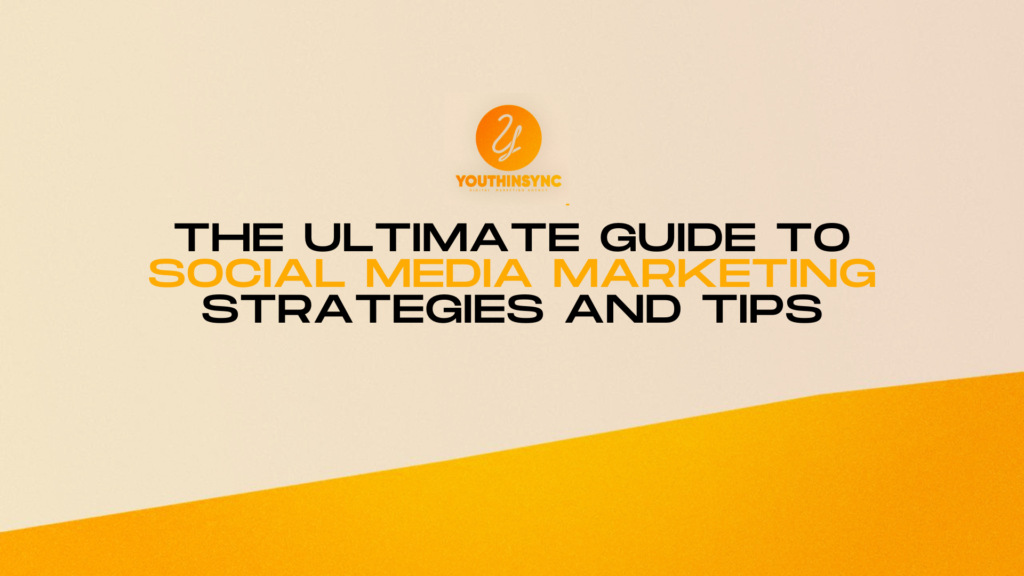Introduction
In today’s digital-first world, social media marketing has become a cornerstone of any successful marketing strategy. With over 4.9 billion social media users globally, the potential for businesses to reach their target audience has never been greater. But with great opportunity comes fierce competition, and without a well-crafted strategy, your efforts can easily get lost in the noise. This ultimate guide will equip you with proven strategies, expert tips, and insights into the latest trends to help you build a powerful social media presence in 2024.
Understanding Social Media Marketing
What is Social Media Marketing?
Social media marketing involves using platforms like Facebook, Instagram, Twitter, LinkedIn, and TikTok to promote products, services, or brands. It encompasses both organic (unpaid) tactics and paid advertising to engage with an audience, build brand awareness, drive traffic, and ultimately convert followers into customers.
The Evolution of Social Media Marketing
Social media marketing has evolved from simple status updates to a complex ecosystem where content, engagement, and advertising coexist. Initially, platforms served as tools for connecting with friends, but they’ve grown into essential channels for businesses to reach consumers. Understanding this evolution is crucial for staying ahead of the curve.
Key Platforms to Consider
Each social media platform offers unique benefits:
- Facebook: A versatile platform ideal for both B2C and B2B marketing, particularly effective for targeted ads.
- Instagram: Visual-focused and great for brands that rely on imagery to tell their story.
- Twitter: Ideal for real-time updates, customer service, and engaging in trending conversations.
- LinkedIn: The go-to platform for B2B marketing and professional networking.
- TikTok: Popular among younger demographics, it’s perfect for viral content and short-form videos.
- Pinterest: A visual discovery engine, especially useful for businesses in fashion, home decor, and DIY.
Building a Social Media Strategy
Setting Clear Objectives
Before diving into social media, you need clear objectives. Whether it’s increasing brand awareness, generating leads, or driving sales, your goals will guide your strategy. Align these objectives with your overall business goals for coherence.
Understanding Your Target Audience
Success in social media marketing hinges on knowing your audience. Use analytics tools to gather insights on demographics, interests, and behavior. This data helps tailor your content to resonate with your audience’s preferences, leading to higher engagement and conversions.
Choosing the Right Platforms
Not every platform suits every business. For example, a B2B company might prioritize LinkedIn, while a fashion brand could focus on Instagram. Analyze where your target audience spends their time and concentrate your efforts on those platforms.
Competitor Analysis
Study your competitors’ social media activities to identify opportunities and threats. What strategies are they using? What content performs well for them? This analysis can reveal gaps in your strategy and areas where you can differentiate your brand.
Creating a Content Calendar
A content calendar is essential for maintaining consistency. Plan your posts in advance, aligning them with your marketing campaigns, product launches, and holidays. This helps ensure that your content is timely and relevant, boosting engagement.
Content Creation and Curation
Types of Content
Variety is key in content creation. Mix up your posts with different content types:
- Text Posts: Share tips, industry insights, and company updates.
- Images: High-quality images can increase engagement, especially on platforms like Instagram and Pinterest.
- Videos: From tutorials to behind-the-scenes, videos are highly engaging and versatile.
- Stories: Temporary content on platforms like Instagram and Facebook can create a sense of urgency and exclusivity.
- Reels: Popular on Instagram, short, engaging videos are ideal for boosting visibility.
The Importance of Visual Content
Visual content is more engaging and shareable. Invest in high-quality visuals that align with your brand’s identity. Tools like Canva or Adobe Spark can help you create professional-looking graphics even without a design background.
Leveraging User-Generated Content
User-generated content (UGC) is a powerful way to build trust and authenticity. Encourage your followers to share their experiences with your products using branded hashtags. Reposting UGC not only fills your content calendar but also strengthens your community.
Content Personalization and Trends
Personalized content resonates more with your audience. Use data to tailor your posts to specific segments of your audience. Additionally, staying on top of trends ensures your content remains relevant. For instance, in 2024, sustainability and inclusivity are trending topics that could align with your brand values.
Tools for Content Creation and Scheduling
Efficiency is crucial in social media marketing. Tools like Buffer, Hootsuite, and Later allow you to schedule posts across platforms, ensuring consistency. For content creation, platforms like Canva, Adobe Creative Cloud, and InShot (for video editing) are indispensable.
Engagement and Community Building
The Importance of Engagement
Social media isn’t just about broadcasting your message; it’s about building relationships. Engaging with your followers by responding to comments, messages, and mentions fosters a sense of community and loyalty.
Strategies for Building an Online Community
To build a loyal community, offer value beyond your products. Share helpful tips, host giveaways, and acknowledge your followers. Create spaces like Facebook Groups or LinkedIn Communities where your audience can connect with each other and your brand.
Responding to Comments and Messages
Timely responses to comments and messages show that you value your followers. This can be especially crucial in managing your brand’s reputation. Even negative feedback presents an opportunity to demonstrate excellent customer service.
Utilizing Social Media Groups
Social media groups are perfect for niche communities. Whether on Facebook or LinkedIn, these groups allow you to engage with a targeted audience in a more personal setting. Share exclusive content, ask for feedback, and encourage discussions to strengthen relationships.
Hosting Live Sessions and Q&A
Live sessions are an excellent way to engage with your audience in real time. Whether it’s a Q&A, a product demo, or an exclusive interview, live videos create a sense of urgency and direct connection with your audience.
Paid Social Media Advertising
Overview of Paid Social Media Ads
While organic reach is essential, paid advertising can significantly amplify your efforts. With precise targeting options, paid ads allow you to reach specific demographics, making them a valuable tool for driving conversions.
Ad Types by Platform
Different platforms offer various ad formats:
- Facebook/Instagram: Carousel ads, video ads, story ads
- Twitter: Promoted tweets, video ads
- LinkedIn: Sponsored content, InMail ads
- TikTok: In-feed ads, branded hashtags
Each format has its strengths, so choose based on your campaign objectives.
Setting Up and Managing Campaigns
Successful ad campaigns start with clear goals and well-defined audiences. Use A/B testing to compare different ad creatives and messages. Regularly monitor your campaigns and adjust based on performance data to optimize your results.
A/B Testing and Optimization
A/B testing is crucial for maximizing ad performance. Test different headlines, images, and calls to action to determine what resonates best with your audience. Continuous optimization based on these insights will improve your ROI.
Budgeting and ROI Calculation
Effective budgeting ensures you’re getting the most out of your ad spend. Allocate your budget based on platform performance and audience size. Tracking ROI is essential; tools like Facebook Ads Manager and Google Analytics can help measure the effectiveness of your campaigns.
Analyzing and Optimizing Performance
Tracking Key Metrics
To gauge your social media performance, track key metrics like reach, engagement, clicks, and conversions. These metrics provide insights into what’s working and where improvements are needed.
Tools for Social Media Analytics
Several tools can help you track and analyze your social media performance:
- Google Analytics: Tracks traffic from social media to your website.
- Hootsuite Analytics: Provides a comprehensive overview of your social media metrics.
- Sprout Social: Offers detailed reporting and audience analysis.
These tools will help you make data-driven decisions to optimize your strategy.
Adapting Strategy Based on Data
Social media marketing isn’t static. Regularly review your analytics and adapt your strategy based on performance data. Whether it’s tweaking your content, adjusting your ad targeting, or experimenting with new formats, being flexible is key to staying relevant.
The Importance of Regular Audits
Conducting regular social media audits helps you identify strengths, weaknesses, and opportunities. Review your content, engagement rates, and follower growth. This will guide your future strategies and ensure continuous improvement.
Trends and Future of Social Media Marketing
Emerging Trends
Staying ahead of trends is crucial in social media marketing. In 2024, expect to see:
- AI and Machine Learning: Automating content creation and personalized marketing.
- AR/VR: Enhancing user experiences with immersive content.
- Influencer Marketing: Continued growth, with a focus on micro and nano influencers.
- Sustainability and Social Responsibility: Consumers are increasingly supporting brands that align with their values.
Predictions for the Future
Looking ahead, social media will likely become even more integrated into consumers’ lives. As platforms evolve, new opportunities for brands will emerge, from shoppable posts to more sophisticated AI-driven marketing.
How to Stay Ahead of the Curve
To stay competitive, keep learning and experimenting with new tools and techniques. Attend webinars, follow industry leaders, and participate in social media marketing communities. Being proactive in adapting to changes will keep your brand relevant and effective.
Common Mistakes and How to Avoid Them
Overposting or Underposting
Finding the right posting frequency is crucial. Over posting can overwhelm your audience, while under posting might make them forget about you. Use analytics to determine the optimal frequency for your brand.
Ignoring Analytics
Without analytics, you’re essentially flying blind. Regularly reviewing your performance data is vital for understanding what works and what doesn’t. This insight will guide your strategy and improve your results.
Failing to Engage with Followers
Engagement is a two-way street. Simply posting content isn’t enough; you must actively participate in conversations with your followers. Failing to do so can lead to disengagement and missed opportunities for building loyalty.
Inconsistent Branding
Your brand’s voice, style, and messaging should be consistent across all platforms. Inconsistencies can confuse your audience and dilute your brand identity. Use brand guidelines to ensure uniformity in all your social media activities.
Conclusion
Social media marketing is a dynamic and ever-evolving field. By following the strategies and tips outlined in this guide, you’ll be well-equipped to build a strong social media presence that drives real results. Remember, success in social media marketing requires a blend of creativity, consistency, and data-driven decision-making. So, start refining your strategy today, and watch your brand flourish in the digital landscape of 2024.

